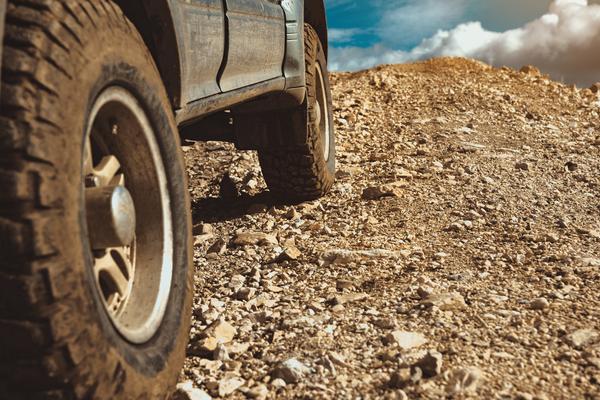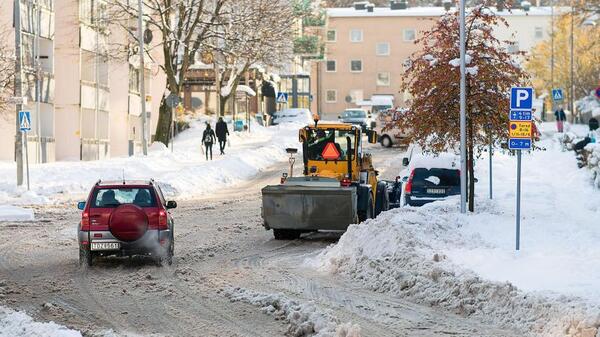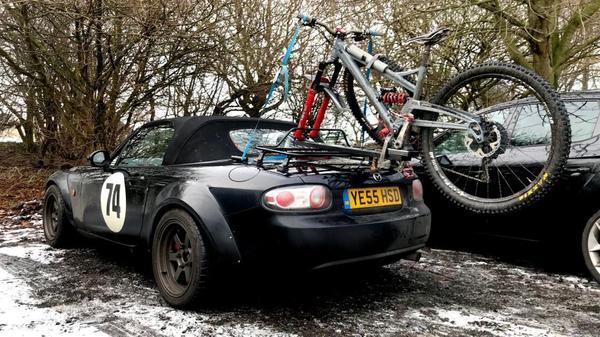Advice
Fuel-efficient driving to save fuel and money
Fuel-efficient driving can help you save money, reduce emissions, and reduce the need to re-fuel as frequently. As the UK faces fuel supply shortages, we look at how you can drive more fuel-efficiently.


Words by: Nimisha Jain
Last updated on 27 September 2021 | 0 min read
Recent headlines have focused on the petrol supply issues, declaring a “fuel shortage” in the UK.
While this shortage may soon pass, it’s forced many to rethink how frequently they drive and how far they might have to travel, and queue, to refuel. As such, it may also be time to rethink our driving habits to ensure we use petrol and diesel efficiently. Eco-friendly driving habits can help you save fuel and money – a crucial skill to have amidst a fuel shortage – as well as keep your car’s emission levels in check. Find out how to navigate your way through this fuel crisis with these fuel-efficient driving tips:
While this shortage may soon pass, it’s forced many to rethink how frequently they drive and how far they might have to travel, and queue, to refuel. As such, it may also be time to rethink our driving habits to ensure we use petrol and diesel efficiently. Eco-friendly driving habits can help you save fuel and money – a crucial skill to have amidst a fuel shortage – as well as keep your car’s emission levels in check. Find out how to navigate your way through this fuel crisis with these fuel-efficient driving tips:
13 ways to reduce your car’s lifetime emissions:
1. Use a cleaning agent
As your car burns fuel in transit, carbon deposit naturally buildsup in your car’s engine over time. This deposit can slowly harm your car’s engine,reducing efficiency and increasing emissions.
Common signs of carbon build-up are overheating, engine knocking, stalling and loss in fuel economy. A cleaning agent can help restore your car’s engine back to its original state by clearing the carbon build-up and decreasing your car’s emissions. Cleaning agents are easy to use and can be poured directly into the fuel tank.
Common signs of carbon build-up are overheating, engine knocking, stalling and loss in fuel economy. A cleaning agent can help restore your car’s engine back to its original state by clearing the carbon build-up and decreasing your car’s emissions. Cleaning agents are easy to use and can be poured directly into the fuel tank.
Benefits of using a carbon cleaning agent include:
• Improves your car’s performance • Makes fuel combustion cleaner and reduces the amount of emissions • Increases fuel efficiency and reduces refuelling costs • Keeps your car’s engine well maintained It’s usually recommended that you carbon clean your engine every three months, but the need for a clean-up can depend on how well your car performs and reacts to the cleaning agent.Factors that determine whether your car’s engine needs carbon cleaning are:
• How efficient the engine is and how it reacts to the cleaning agent • What the weather and traffic conditions are like - if you live in a cold region and you often find yourself in traffic, then the engine’s carbon build-up can be higher • The number of miles your car does without cleaning the engine Many manufacturers use AdBlue in new diesel cars to keep emissions in check, so if you’re driving a recent diesel car, it’s possible that your car already uses AdBlue.2. Use better fuel
Premium fuel for your car can be more expensive than regular fuel, but it can improve your car’s efficiency and reduce pollutants by removing dirt from your engine with the help of active cleaning agents. Fuel shortages may make premium fuel more expensive than usual, but it’ll also help maintain your car’s driving efficiency which will mean a reduced need to refuel.
Premium fuel usually contains fewer chemicals which improves fuel efficiency. However, the degree of improvement will vary for different make and models, so try superior fuel a few times and notice the amount of difference it makes. The government announced that E10 petrol, that contains up to 10% renewable ethanol to reduce CO2 emissions, will be available by summer 2021 – before using E10 petrol, make sure it’s compatible with your car.
Premium fuel usually contains fewer chemicals which improves fuel efficiency. However, the degree of improvement will vary for different make and models, so try superior fuel a few times and notice the amount of difference it makes. The government announced that E10 petrol, that contains up to 10% renewable ethanol to reduce CO2 emissions, will be available by summer 2021 – before using E10 petrol, make sure it’s compatible with your car.
3. Change the oil
Car manufacturers usually recommend the best type of fuel for your car to ensure it runs smoothly. The vehicle handbook also mentions the ideal time period for getting your car serviced. By following these recommendations, you can keep your car running efficiently and minimise engine damage that can increase emissions.
Changing engine oil regularly helps keep the engine well lubricated and prolong the life of the engine’s moving parts. To change the engine oil, stop the engine and wait a few minutes for the oil to settle down - this keeps your vehicle cool, clean and effective. If your vehicle gets overheated and there’s wear and tear in the engine, it can lead to inefficiencies and increase your car’s CO2 emissions. You can easily check if your engine’s levels are running low – open the bonnet, unscrew the dipstick, wipe it clean, re-insert the dipstick all the way in and wait, and then remove it to check the level. The oil should be between the ‘min’ and ‘max’ marks.
Changing engine oil regularly helps keep the engine well lubricated and prolong the life of the engine’s moving parts. To change the engine oil, stop the engine and wait a few minutes for the oil to settle down - this keeps your vehicle cool, clean and effective. If your vehicle gets overheated and there’s wear and tear in the engine, it can lead to inefficiencies and increase your car’s CO2 emissions. You can easily check if your engine’s levels are running low – open the bonnet, unscrew the dipstick, wipe it clean, re-insert the dipstick all the way in and wait, and then remove it to check the level. The oil should be between the ‘min’ and ‘max’ marks.
4. Change the air filter
Your car’s air filter helps keep dust, sand and other particulate matter out of your car. If the air filter gets clogged, the airflow to the engine reduces, reducing engine power and leading to poor acceleration, black smoke at the tailpipe, and increased emissions.
This can be a bigger problem for those who live in areas where there’s a lot of dust. You should get your car serviced at the recommended interval of time so that any harmful build-up can be cleared, and clogged air filters can be fixed.
This can be a bigger problem for those who live in areas where there’s a lot of dust. You should get your car serviced at the recommended interval of time so that any harmful build-up can be cleared, and clogged air filters can be fixed.
5. Check your tyre pressure
Low tyre pressure creates greater rolling resistance which increases fuel consumption and CO2 emissions.
You should check that the tyre pressure meets the manufacturer’s recommendations at least once a month – you can usually find the recommended PSI (pounds per square inch) in your car’s handbook. You should also check the tyres’ tread depth. You can do this by placing a 20p coin on the tread – if you can't see the outer rim around the edge of the coin, then your tyre’s safe and above the legal limit but if you can see the rim, then your tyre’s tread is less than 3mm.
You should check that the tyre pressure meets the manufacturer’s recommendations at least once a month – you can usually find the recommended PSI (pounds per square inch) in your car’s handbook. You should also check the tyres’ tread depth. You can do this by placing a 20p coin on the tread – if you can't see the outer rim around the edge of the coin, then your tyre’s safe and above the legal limit but if you can see the rim, then your tyre’s tread is less than 3mm.

6. Air conditioning system
Using your car’s A/C during summer feels great, but the A/C system increases your vehicle’s emissions by using fuel to cool down your car.
To use your car’s A/C efficiently, you should: 1. Set your A/C at the lowest setting and adjust the fan – this helps save gas as, normally, the A/C cools the air to 38 degrees. If you set the A/C to a higher temperature setting, you’ll be forcing the A/C to re-heat the air, requiring more gas. 2. Don’t pre-cool your car – it’s not as efficient to cool your car. The A/C functions much faster when the engine’s running while you drive as the faster the engine turns, the faster the A/C compressor runs. Instead of pre-cooling, you should open the rear windows for a few minutes to let the hot air escape. 3. If your car’s A/C has an automatic start and stop feature, it can use more fuel, so turning this feature off can reduce the amount of emissions produced. 4. Clean out your cabin air filter to make your car’s A/C more effective – this may or may not be an easy task, depending on where the air filter is placed in your car. In many cars, you can easily access it behind the glove compartment, however, if that’s not the case for your car, you may need to get it cleaned professionally. 5. Turning off the A/C a few miles before you’ll reach your destination while the fans keep circulating the cool air in the meantime can help save fuel. 6. Having your windows down the entire time you drive can create drag and increase the amount of gas you use and emissions – instead, use your vehicle’s climate control system to keep cool as it can more accurately control the car’s interiors.
To use your car’s A/C efficiently, you should: 1. Set your A/C at the lowest setting and adjust the fan – this helps save gas as, normally, the A/C cools the air to 38 degrees. If you set the A/C to a higher temperature setting, you’ll be forcing the A/C to re-heat the air, requiring more gas. 2. Don’t pre-cool your car – it’s not as efficient to cool your car. The A/C functions much faster when the engine’s running while you drive as the faster the engine turns, the faster the A/C compressor runs. Instead of pre-cooling, you should open the rear windows for a few minutes to let the hot air escape. 3. If your car’s A/C has an automatic start and stop feature, it can use more fuel, so turning this feature off can reduce the amount of emissions produced. 4. Clean out your cabin air filter to make your car’s A/C more effective – this may or may not be an easy task, depending on where the air filter is placed in your car. In many cars, you can easily access it behind the glove compartment, however, if that’s not the case for your car, you may need to get it cleaned professionally. 5. Turning off the A/C a few miles before you’ll reach your destination while the fans keep circulating the cool air in the meantime can help save fuel. 6. Having your windows down the entire time you drive can create drag and increase the amount of gas you use and emissions – instead, use your vehicle’s climate control system to keep cool as it can more accurately control the car’s interiors.
7. Turn off unnecessary electrics
Modern cars are packed with electrical components that put additional strain on your car’s fuel tank.
When driving, turn off any unnecessary electrical – including heated screens, demisters and headlights, when you don’t need them.
When driving, turn off any unnecessary electrical – including heated screens, demisters and headlights, when you don’t need them.
8. Reduce idle time
Car idling is when your car’s stationary, but the engine is still running. Unnecessary idling strains your engine, wastes fuel in the process and contributes to air pollution.
Drivers usually idle their cars in winter before setting off to warm up the engine or when they leave their engine running while stuck in traffic. It’s best to warm up your car in winter when you start driving rather than spending extra time beforehand to warm up the cabin. When waiting in traffic, if you think you’re likely to wait for a minute or more, it’s best to switch off the engine – restarting your car wastes less fuel than idling your engine for a long time. You can also reduce your idling time when you’re waiting to pick someone up, or while waiting at a railway crossing. If your car has an intelligent start/stop ignition function, it’ll automatically shut the engine down when it’s not in use to avoid idling. In 2019, Public Health England put forward recommendations to make areas outside school, no-idling zones to help reduce air pollution. If areas such as schools and hospitals are made no-idling zones, it can help in reducing emissions immensely and help maintain clean air especially for people at higher risk such as the elderly.
Drivers usually idle their cars in winter before setting off to warm up the engine or when they leave their engine running while stuck in traffic. It’s best to warm up your car in winter when you start driving rather than spending extra time beforehand to warm up the cabin. When waiting in traffic, if you think you’re likely to wait for a minute or more, it’s best to switch off the engine – restarting your car wastes less fuel than idling your engine for a long time. You can also reduce your idling time when you’re waiting to pick someone up, or while waiting at a railway crossing. If your car has an intelligent start/stop ignition function, it’ll automatically shut the engine down when it’s not in use to avoid idling. In 2019, Public Health England put forward recommendations to make areas outside school, no-idling zones to help reduce air pollution. If areas such as schools and hospitals are made no-idling zones, it can help in reducing emissions immensely and help maintain clean air especially for people at higher risk such as the elderly.

9. Change your driving style
Minor changes in your driving habits can go a long way in reducing emissions.
Few things to keep in mind while driving to reduce your emissions are:
Few things to keep in mind while driving to reduce your emissions are:
1. Keep your speed in check
Driving at a speed below 15mph and driving at fast speeds like 60mph burns your car’s fuel quickly and emits a lot of emissions. Frequent speeding and braking can burn fuel quickly, as well as strain your car.2. Keep your car’s windows rolled up
Driving with the windows down increases drag and so consumes more fuel. By keeping your windows up, you can reduce drag and use fuel more efficiently.3. Change gear early
By changing your car’s gear early, you can reduce the amount of emissions emitted by putting less strain on the engine.4. Drive mindfully
When driving, go easy on the gas pedal and brakes. Accelerating or braking aggressively can strain your car, cause wear and tear, and can increase emissions by 24%.10. Avoid unnecessary driving
Whenever possible, ditch the car and walk or cycle the distance. Not only does this reduce emissions, but it’s also good for your health. If the distance isn’t walkable, consider carpooling or using public transport.
If a job can be done in a single trip rather than two separate ones, plan ahead and avoid travelling twice by getting different chores done in a single trip. If a job can be done in a single trip rather than two separate ones, plan ahead and avoid travelling twice by getting different chores done in a single trip. Try and use sat-nav if driving to a new location – this helps in avoiding getting lost and unnecessarily burning fuel by driving in circles.
If a job can be done in a single trip rather than two separate ones, plan ahead and avoid travelling twice by getting different chores done in a single trip. If a job can be done in a single trip rather than two separate ones, plan ahead and avoid travelling twice by getting different chores done in a single trip. Try and use sat-nav if driving to a new location – this helps in avoiding getting lost and unnecessarily burning fuel by driving in circles.
11. Maintain your vehicle aerodynamic efficiency
Carrying your bike on your car’s roof or using a roof rack or roof box creates resistance which causes drag. If you don’t require the bike or other items on the roof rack, remove them to avoid inefficiencies.
Other ways to avoid drag are keeping windows shut and changing the air filter when it becomes dirty. You should also remove unnecessary items from the boot as extra weight means extra fuel being burnt.
Other ways to avoid drag are keeping windows shut and changing the air filter when it becomes dirty. You should also remove unnecessary items from the boot as extra weight means extra fuel being burnt.

12. Get your car serviced regularly
Regular vehicle checks help in maintaining your car’s health – this ensures all car parts run efficiently and produce limited emissions.
Many cars’ dashboards show warning signs if a component needs a check such as the engine, brakes and oil levels. You should also follow the car manufacturer’s recommended time period for getting your car serviced.
Many cars’ dashboards show warning signs if a component needs a check such as the engine, brakes and oil levels. You should also follow the car manufacturer’s recommended time period for getting your car serviced.
13. Change your car
If you’re driving an old car that’s emitting too much pollution or doesn’t meet emission standards, it may be time to get a new car.
Modern cars comply with stringent emissions requirements and generally have higher fuel efficiency. When buying a new car, look for less-polluting vehicles such as battery electric vehicles, plug-in hybrids and hydrogen fuel cell vehicles. When shopping for a new car, look for fuel-efficient vehicles with low greenhouse gas emissions. Related: How green are electric cars?
Modern cars comply with stringent emissions requirements and generally have higher fuel efficiency. When buying a new car, look for less-polluting vehicles such as battery electric vehicles, plug-in hybrids and hydrogen fuel cell vehicles. When shopping for a new car, look for fuel-efficient vehicles with low greenhouse gas emissions. Related: How green are electric cars?
Why should you reduce your car’s emissions?
Fuel-efficient driving can help you achieve the following benefits:
• It reduces the number of times you need to refuel your car • Reduced emissions can mean financial savings as your car’s fuel costs are reduced and there’s less wear and tear • It reduces greenhouse gas emissions and keeps the environment greener • It can keep your car’s emission levels in check so that your car meets the emissions’ legal limits for its MOT test • It increases fuel-efficiency • It reduces your carbon footprint • It can prevent health problems caused by increased emissions such as respiratory problems, heart ailments and premature deaths • It contributes towards stopping climate change • If you’re using a company car, it can demonstrate corporate social responsibility In the UK, cars need to follow Euro 6 emission standards set by the Central Pollution Control Board under the Ministry of Environment and Forest. These standards regulate the permissible amount of emissions your car is allowed when on the road. If your car fails to meet these standards, then they are not fit for the road. If you continue driving these vehicles, you can be fined. To keep car emissions in check, all cars go through Worldwide Harmonised Light Vehicle Test Procedure (WLTP) and RDE tests.
• It reduces the number of times you need to refuel your car • Reduced emissions can mean financial savings as your car’s fuel costs are reduced and there’s less wear and tear • It reduces greenhouse gas emissions and keeps the environment greener • It can keep your car’s emission levels in check so that your car meets the emissions’ legal limits for its MOT test • It increases fuel-efficiency • It reduces your carbon footprint • It can prevent health problems caused by increased emissions such as respiratory problems, heart ailments and premature deaths • It contributes towards stopping climate change • If you’re using a company car, it can demonstrate corporate social responsibility In the UK, cars need to follow Euro 6 emission standards set by the Central Pollution Control Board under the Ministry of Environment and Forest. These standards regulate the permissible amount of emissions your car is allowed when on the road. If your car fails to meet these standards, then they are not fit for the road. If you continue driving these vehicles, you can be fined. To keep car emissions in check, all cars go through Worldwide Harmonised Light Vehicle Test Procedure (WLTP) and RDE tests.